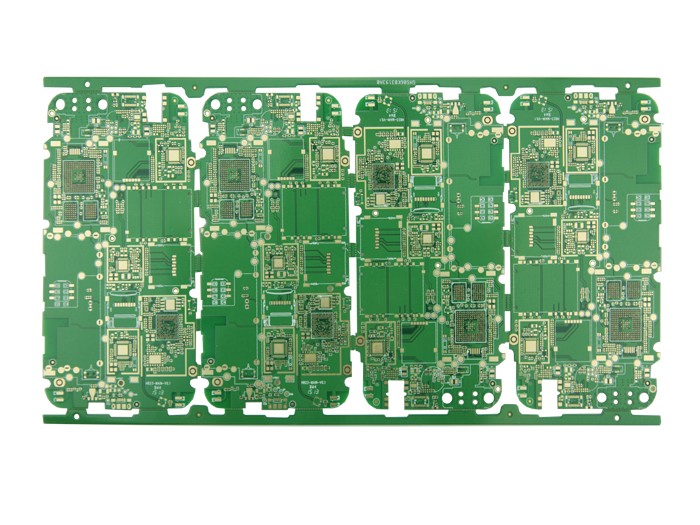In printed PCB circuit processing, ammonia etching is a relatively fine and complex chemical reaction process. On the other hand, it is an easy job. Once the process is up-regulated, production can be continued. The key is to maintain continuous working status once it is turned on, and it is not advisable to dry and stop. The etching process depends to a large extent on the good working condition of the equipment. At present, no matter what etching solution is used, high-pressure spray must be used, and in order to obtain a neater line side and high-quality etching effect, the nozzle structure and spray method must be strictly selected.

In order to obtain a good side effect, many different theories have appeared, forming different design methods and equipment structures. These theories are often very different. But all theories about etching recognize the basic principle of keeping the metal surface in constant contact with fresh etching solution as quickly as possible. The chemical mechanism analysis of the etching process also confirmed the above point of view. In ammonia etching, assuming that all other parameters remain unchanged, the etching rate is mainly determined by the ammonia (NH3) in the etching solution. Therefore, using fresh solution to etch the surface has two main purposes: one is to flush out the copper ions that have just been produced; the other is to continuously provide ammonia (NH3) needed for the reaction.
In the traditional knowledge of the printed circuit industry, especially the suppliers of printed circuit raw materials, it is recognized that the lower the monovalent copper ion content in the ammonia etching solution, the faster the reaction speed. This has been confirmed by experience. . In fact, many ammonia-based etching solution products contain special ligands for monovalent copper ions (some complex solvents), whose role is to reduce monovalent copper ions (these are the technical secrets of their products with high reactivity ), it can be seen that the influence of monovalent copper ions is not small. If the monovalent copper is reduced from 5000ppm to 50ppm, the etching rate will be more than doubled.
Because a large amount of monovalent copper ions are generated during the etching reaction, and because the monovalent copper ions are always tightly combined with the complexing group of ammonia, it is very difficult to keep its content close to zero. The monovalent copper can be removed by converting monovalent copper into divalent copper through the action of oxygen in the atmosphere. The above purpose can be achieved by spraying.
This is a functional reason for passing air into the etching box. However, if there is too much air, it will accelerate the loss of ammonia in the solution and decrease the pH value, resulting in a decrease in the etching rate. Ammonia in the solution is also the amount of change that needs to be controlled. Some users adopt the method of passing pure ammonia into the etching reservoir. To do so, a set of PH meter control system must be added. When the automatically measured PH result is lower than the given value, the solution will be added automatically.
In the field of chemical etching (also known as photochemical etching or PCH) related to this, research work has begun and has reached the stage of etching machine structure design. In this method, the solution used is divalent copper, not ammonia-copper etching. It may be used in the printed circuit industry. In the PCH industry, the typical thickness of etched copper foil is 5 to 10 mils (mils), and in some cases the thickness is quite large. Its requirements for etching parameters are often more stringent than those in the PCB industry.
There is a research result from the PCM industrial system, which has not yet been officially published, but the result will be refreshing. Because of the relatively strong project fund support, researchers have the ability to change the design ideas of the etching device in the long-term sense, and to study the effects of these changes at the same time. For example, compared with the conical nozzle, the best nozzle design uses a fan shape, and the spray manifold (that is, the pipe into which the nozzle is screwed) also has an installation angle, which can spray 30 degrees of the workpiece into the etching chamber. Without such a change, the installation method of the nozzles on the manifold will cause the spray angle of each adjacent nozzle to be not completely the same. The spray surfaces of the two groups of nozzles are slightly different from those of the corresponding group (see Figure 8, which shows the working conditions of the spray). In this way, the shapes of the sprayed solutions become superimposed or intersected. Theoretically, if the shapes of the solutions cross each other, the jetting force of this part will be reduced, and the old solution on the etched surface cannot be effectively washed away while keeping the new solution in contact with it. This situation is especially prominent at the edge of the spray surface. Its ejection force is much smaller than the vertical direction.
This study found that the new design parameter is 65 pounds per square inch (ie 4+Bar). Every etching process and every practical solution has a problem of a good spray pressure, and at present, the spray pressure in the etching chamber reaches 30 psig (2Bar) or more. There is a principle, that is, the higher the density (ie, specific gravity or glass degree) of an etching solution, the higher the spray pressure should be. Of course this is not a single parameter. Another important parameter is the relative mobility (or mobility) that controls the reaction rate in the solution.
The above is the introduction of the equipment adjustment and the interaction relationship with the corrosion solution in the etching of the PCB outer circuit. Ipcb is also provided to PCB manufacturers and PCB manufacturing technologe.